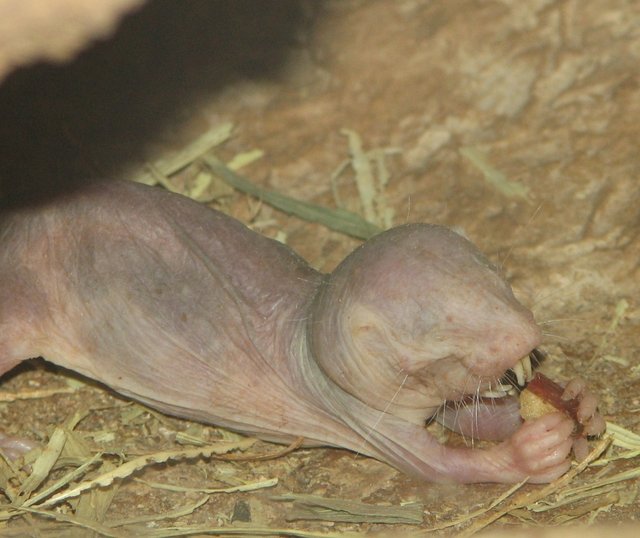Researchers figured out how the naked mole-rat (Heterocephalus glaber) can survive with very low oxygen concentration
The naked mole-rat (Heterocephalus glaber) is a really weird animal that is very unique in terms of adaptations. For one, it is the only cold-blooded mammal in the world, and uses thermoregulation kind of like reptiles do. It also cannot feel pack due to lacking the key neurotransmitter that is responsible for sending pain signals, as well as it having a natural resistance to cancer. Yeah, it is pretty much strange is every way.
This is truly a remarkable animal that is worth studying, and a group of scientists recently discovered that they are able to survive in conditions with extremely low oxygen concentrations. By putting them into boxes with only 5 % oxygen (compared to the normal 21 % in air), which would kill humans and most other animals within minutes, they did not die, and were in fact alive and well after five hours. After this time, they were removed from their boxes, so no one really knows how long they could survive during these conditions, or if they are even able to survive permanently in such conditions.

A naked mole-rat eating. Image is public domain.
How the naked mole-rat survives without oxygen
When exposed to low oxygen temperatures, the rat switched from using glucose as a sugar to support the brain and heart cells, into using fructose. This is a less energetic sugar, which is why most animals prefer the regular glucose sugar, but the upside is that it does not require oxygen to produce.
Fructose is the main sugar used by plants, and as far as we know, most animals don’t produce a lot of it. As said above, it is generally less energetic than glucose, so it would not be beneficial to use a fructose pathway for most animals, seeing as oxygen deprivation is very rare in natural settings, so this is a classic trade-off between being able to get more energy versus being able to survive with little oxygen.
The naked mole-rat lives underground in large colonies, so it is not impossible for the group to use all the oxygen inside the burrows for breathing. This makes the optional fructose pathway for supplying the brain and heart cells with energy a great adaptation! Sure, they get less energy from the sugar the use, but it is a lot better than dying.
How can this study help humans?
Humans have all the same fructose pathways that are found in the naked-mole rat, but in much smaller quantities. It is just not possible for us to produce enough fructose to stay alive during oxygen deprivation. However, with studies like these, we get to learn more about these pathways, and this research could be used to improve situations where people do not get enough oxygen to the brain or heart, such as during heart attacks.
It might not be easy to use this research for helping humans dealing with oxygen deprivation, but the increased knowledge might just be able to provide us with some more insight that could in turn end up finding a method to help us with surviving these conditions.
Source
Here is the link to the paper.
About the author
Hi, I’m @valth! I live in Norway with my girlfriend, our newborn son, and our two dogs, one of which is seen wearing a bow tie in the profile picture!
I am very passionate about nature and biology, and have been studying ecology for a few years now. My passions are mostly within conservation biology, mycology (the studies of mushrooms), animal behavior and general microbiology. I really enjoy both the theoretical aspect, as well as the more practical aspect of biology, and I spend about as much time in front of biology textbooks as I do spend on finding and identifying plant, mushroom and animal species in the forests.
Make sure to hit the big follow button above to go to my profile and follow me! This will make sure all of my posts end up right in your feed, and you can get your daily dose of biology news without any hassle :)

Utterly fascinating. I knew very little about this animal. It seems we have much to learn from its unique adaptations.
Yeah, I had a blast reading some of the studies about them. What is really cool is that we just found out about this alternate pathway for getting energy during low oxygen concentrations, so who knows what else we might find out about them in the future? :)
Thanks for commenting! I'm glad you found it interesting.
Hi @valth, this is a very interesting post, thank you for sharing
No problem, I'm happy to hear that you liked it :)
Weird animal and nice reasearch. Maybe, one day we could find te way to activate this pathways on us with the help of some widget or something like that.
Yea, that would be really cool! :)